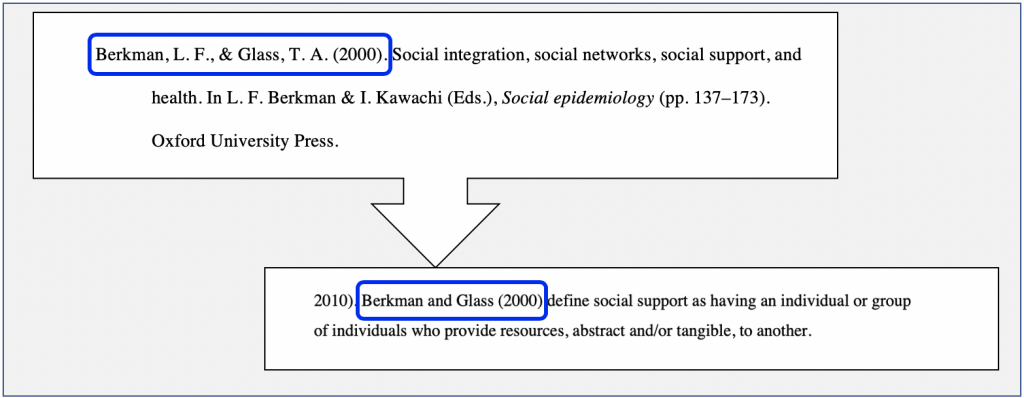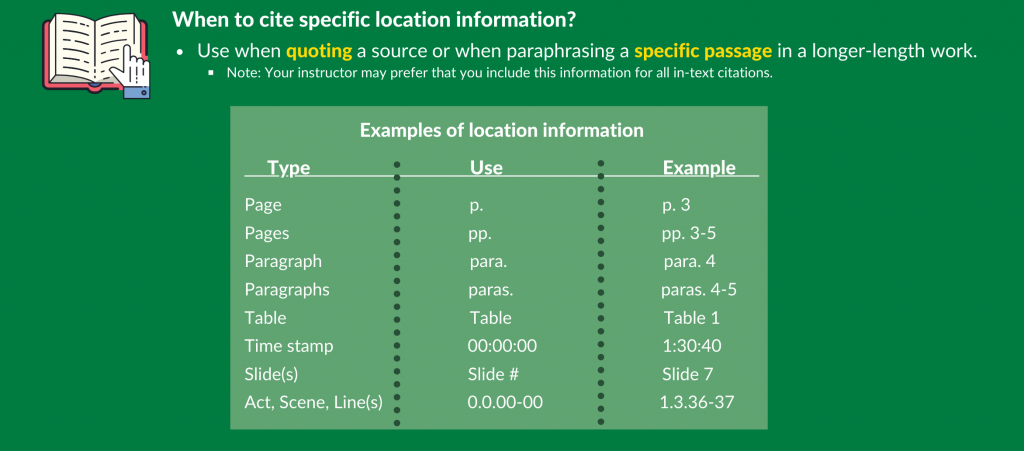5.6 What is an In-Text Citation?
Sarah Adams and Debbie Feisst
Learning Outcome
- Create and format in-text citations in APA Style.
You find a great idea or argument in a source that supports your topic and you want to include it. To use the source, you need to create an in-text citation and add it to your paper either as a direct quote or a paraphrase where you have discussed evidence from that source. In-text citations tell your reader which ideas belong to you and which ideas belong to someone else.
You can include in-text citations in your academic paper or business report as a parenthetical citation or as a narrative citation or in a combination of these forms. The following example shows how these two types of in-text citations have been included in a paper. Click on the ![]() symbol to learn about them.
symbol to learn about them.
The image below provides an overview of these two types.
As you can see, an in-text citation is formatted using three key pieces:
- parentheses,
- author’s family name or group name, and
- year.
In-text citation, information is pulled directly from its matching reference list citation. You may find that it is easiest to create the reference citation first and then its matching in-text citation.
So far we have focused on paraphrasing examples. Next, we will look at examples for in-text citations of quotations.
When you use a direct quotation instead of a paraphrase, you also need to include the quotation’s location in the work. Location information is added to your in-text citation directly after the date. For example, a parenthetical citation would look like the following: (Smith, 2010, pp. 3-4).
For the following quotation examples, click on the ![]() symbol to learn about how to add in-text citations for short quotations and block quotations.
symbol to learn about how to add in-text citations for short quotations and block quotations.
Short Direct Quote In-Text Citation Examples
Narrative Citation
Parenthetical Citation
Block Direct Quote In-Text Citation Examples
Narrative Citation
Parenthetical Citation
The image below details some location information examples and their appropriate abbreviation.
Now that we have covered the basics of in-text citations, continue to the next section to complete a few in-text citation practice activities.




